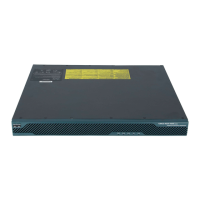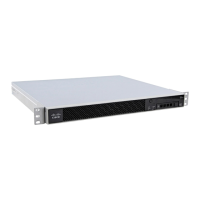1-3
Cisco ASA Series CLI Configuration Guide
Chapter 1 Configuring Multicast Routing
Licensing Requirements for Multicast Routing
clustering, redirection to the master unit is common. In Layer 3 clustering, units do not act
independently. All data and routing packets are processed and forwarded by the master unit. Slave units
drop all packets that have been sent.
For more information about clustering, see Chapter 1, “Configuring a Cluster of ASAs.”
Licensing Requirements for Multicast Routing
The following table shows the licensing requirements for this feature:
Guidelines and Limitations
This section includes the guidelines and limitations for this feature.
Context Mode Guidelines
Supported in single context mode. In multiple context mode, unshared interfaces and shared interfaces
are not supported.
Firewall Mode Guidelines
Supported only in routed firewall mode. Transparent firewall mode is not supported.
IPv6 Guidelines
Does not support IPv6.
Additional Guidelines
In clustering, for IGMP and PIM, this feature is only supported on the master unit.
Enabling Multicast Routing
Enabling multicast routing lets you enable multicast routing on the ASA. Enabling multicast routing
enables IGMP and PIM on all interfaces by default. IGMP is used to learn whether members of a group
are present on directly attached subnets. Hosts join multicast groups by sending IGMP report messages.
PIM is used to maintain forwarding tables to forward multicast datagrams.
Note Only the UDP transport layer is supported for multicast routing.
To enable multicast routing, enter the following command:
Model License Requirement
All models Base License.

